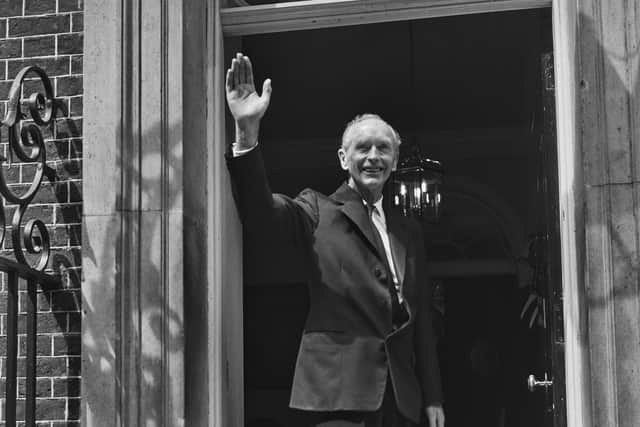Conservative leadership race: Why the Tory party has reason to regret letting its members choose the leader – Ian Swanson
and live on Freeview channel 276
Let us know what you think and join the conversation at the bottom of this article.
The competing charms of the remaining contenders will now be directed at Conservative MPs.
But there was a time when the whole business of the Tories choosing their leader – and often the UK’s Prime Minister – was conducted strictly behind closed doors, well away from the public eye, but also away from the party’s own members and even most of its MPs.


Advertisement
Hide AdAdvertisement
Hide AdTory leaders were not elected by anyone, but “emerged” from a secretive process which involved a “magic circle” in the upper echelons of the party.
Grandees took “soundings” among Cabinet ministers, influential senior MPs and key people in the wider party before a name was mysteriously arrived at. The Tories referred to it as “the customary processes of consultation within the party”.
But the last time these processes were used was when Harold Macmillan stood down as Prime Minister in 1963. Rab Butler, who had effectively been deputy PM, was the favourite to succeed and there were other contenders too, but in the end, amid claims of a stitch-up, the job went to Lord Home, who had to renounce his title and become Sir Alec Douglas-Home.
In 1965, Ted Heath was the first Tory leader to be chosen by a ballot of the party's MPs. Margaret Thatcher, John Major and William Hague were all elected in the same way.
Advertisement
Hide AdAdvertisement
Hide AdParty members weren't involved until a rule change in 1998 introduced the current system where MPs whittle down the contenders to just two names and then let the party membership pick between them.
But arguably the arrival of internal democracy has not brought the party particularly good fortune.
The first leader chosen by the members was Iain Duncan Smith in 2001. He didn't last long – and didn't even get to fight an election – before being forced to quit in 2003 after losing a vote of confidence among MPs.
When members chose Michael Howard as his successor it was seen as the return of a heavyweight to the helm, but he resigned after leading the party to defeat in the 2005 general election.
Advertisement
Hide AdAdvertisement
Hide AdThe party then turned to “moderniser” David Cameron, who did return the Tories to power in 2010 – but it had to be as part of a coalition with the Lib Dems after he failed to win an outright majority.
And when he did secure a surprise majority in 2015, he took the massive gamble of calling the EU referendum and lost. That paved the way for Theresa May – the sole candidate in 2016 after her only remaining opponent withdrew – but she called an unnecessary election and lost their majority, then had to quit when MPs wouldn’t pass her Brexit deal.
Her successor Boris Johnson, long a favourite with the membership, won a decisive general election victory in 2019 but his premiership ended in disgrace.
Conservative members are notoriously unrepresentative of the population as a whole, but the party has little choice but to give them the final say,
But it’s not what Rab Butler or Lord Home would have expected, never mind being asked to debate their differences on TV.
Comment Guidelines
National World encourages reader discussion on our stories. User feedback, insights and back-and-forth exchanges add a rich layer of context to reporting. Please review our Community Guidelines before commenting.
